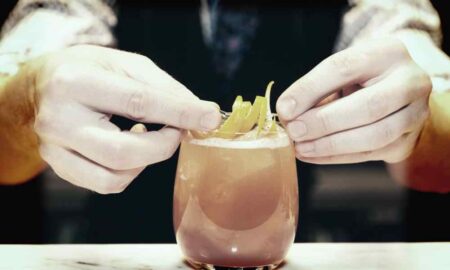

Today we’d like to introduce you to Stephen Earp.
Every artist has a unique story. Can you briefly walk us through yours?
I fell into ceramics by accident. After high school, I planned on never seeing the inside of a classroom again. I was silk screening t-shirts and bumper stickers for sale at concerts and festivals for a couple years. Then it occurred to me that I should take some classes on photo silk screening which were then available at my state university. Once I enrolled, the courses were cancelled. So, there I was, enrolled in college and looking for a way to make art in multiples. Ceramics seemed to offer the best option. I graduated five years later with a Bachelor’s Degree in Fine Arts.
From there, I went on to an intensive apprenticeship, a ceramic technician job with an international craft assistance organization, working in a living history museum, and finally to establishing my own studio. I’ve never looked back.
Please tell us about your art.
I work in pottery styles that were popular during the colonial era through the first decades of the US. My interest in these styles grew directly out of my previous educational pursuits. I took several African art history classes while in college, including a stint on an archeological dig in West Africa. After graduating, I apprenticed with a man who imparted to me a thorough grounding in traditional pottery making of Japan, where he had studied for several years. I then worked in Cental America with a craft assistance organization, and became immersed in the traditional ceramics of that region.
Upon my return to the US, I wanted to make pottery that reflected not just my own ideas, but that also shared some connection to where I would live – geographically, historically, and culturally – as had been the focus of all the ceramic traditions I had previously been exposed to. Ironically, after such intensive dives into African, Japanese, and Central American ceramics, I realized I knew practically nothing of the ceramic history of my own back yard.
The living history museum Old Sturbridge Village, located in western Massachusetts and near where I was living at the time, was just then looking for a potter. There, I discovered the almost forgotten tradition of early American redware pottery. It was everything I had been looking for.
After establishing my own pottery in Shelburne Falls, MA, I expanded my repertoire to include work inspired by a wider sampling of the amazingly complex web of styles that sprouted up in the US and Europe between the mid-18th to mid-19th centuries. One would be hard pressed to find another period of such dizzying exploration and discovery in ceramics. I find the challenges and inspiration derived from the examples that those earlier potters have left us to be endless.
I hope to add my own voice to the ceramic ‘conversation’ started then, and to bring recognition of these styles to a wider audience today.
What do you think about conditions for artists today? Has life become easier or harder for artists in recent years? What can cities like ours do to encourage and help art and artists thrive?
Ceramics is a difficult but rewarding profession. It’s common for potters to wax poetic about all the benefits of this work, of which there are many. I’ll leave the positive side for others to describe. However, I can’t ignore the amount of grueling physical labor inherent in this type of work, which can easily result in carpal tunnel issues, loss of cartilage in wrists and elbows, neck and lower back muscle strain, etc. The endless stress of keeping up with deadlines and bill schedules leaves its toll as well.
Still, we do this because it is who and what we are. For anyone considering ceramic art as a profession, I suggest going into it open eyed about the difficulties, and after thoroughly understanding and accepting that, much as you have tried otherwise, you really don’t have a choice – it’s just what you have to do.
How or where can people see your work? How can people support your work?
A complete schedule of shows and events that I participate in throughout the year can be viewed on my web site, www.stephenearp.com. Many traditional decorative arts galleries, museum gift shops, and historical sites across the country carry my work. You can also follow me on Facebook at www.facebook.com/Stephen Earp Redware, and on Instagram at www.instagram.com/steve.earp.71. If you’d like to read more about these types of pottery, visit my blog at www.wordpress.com/thisdayinpotteryhistory.
Contact Info:
- Website: www.stephenearp.com
- Phone: 4136250015
- Email: steveearp1@gmail.com
- Instagram: steve.earp.71
- Facebook: www.facebook.com/StephenEarpRedware
- Other: www.wordpress.com/thisdayinpotteryhistory







 Image Credit:
Image Credit:
Stephen Earp
Getting in touch: VoyageHouston is built on recommendations from the community; it’s how we uncover hidden gems, so if you know someone who deserves recognition please let us know here.

















